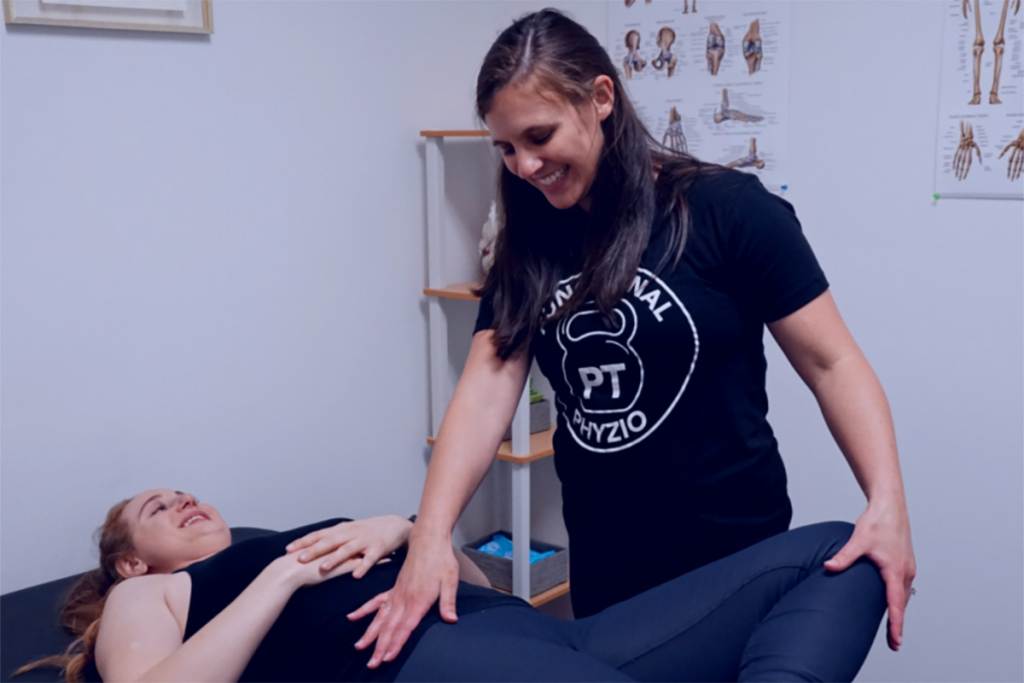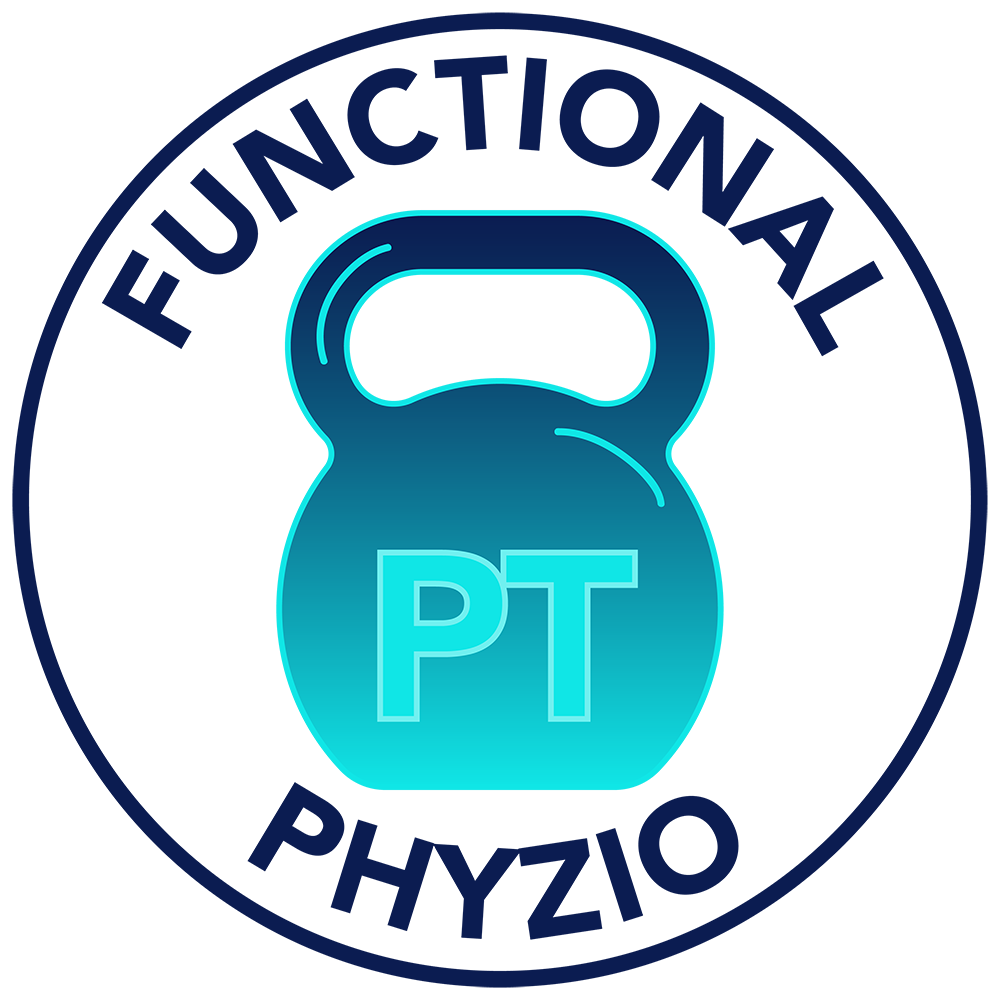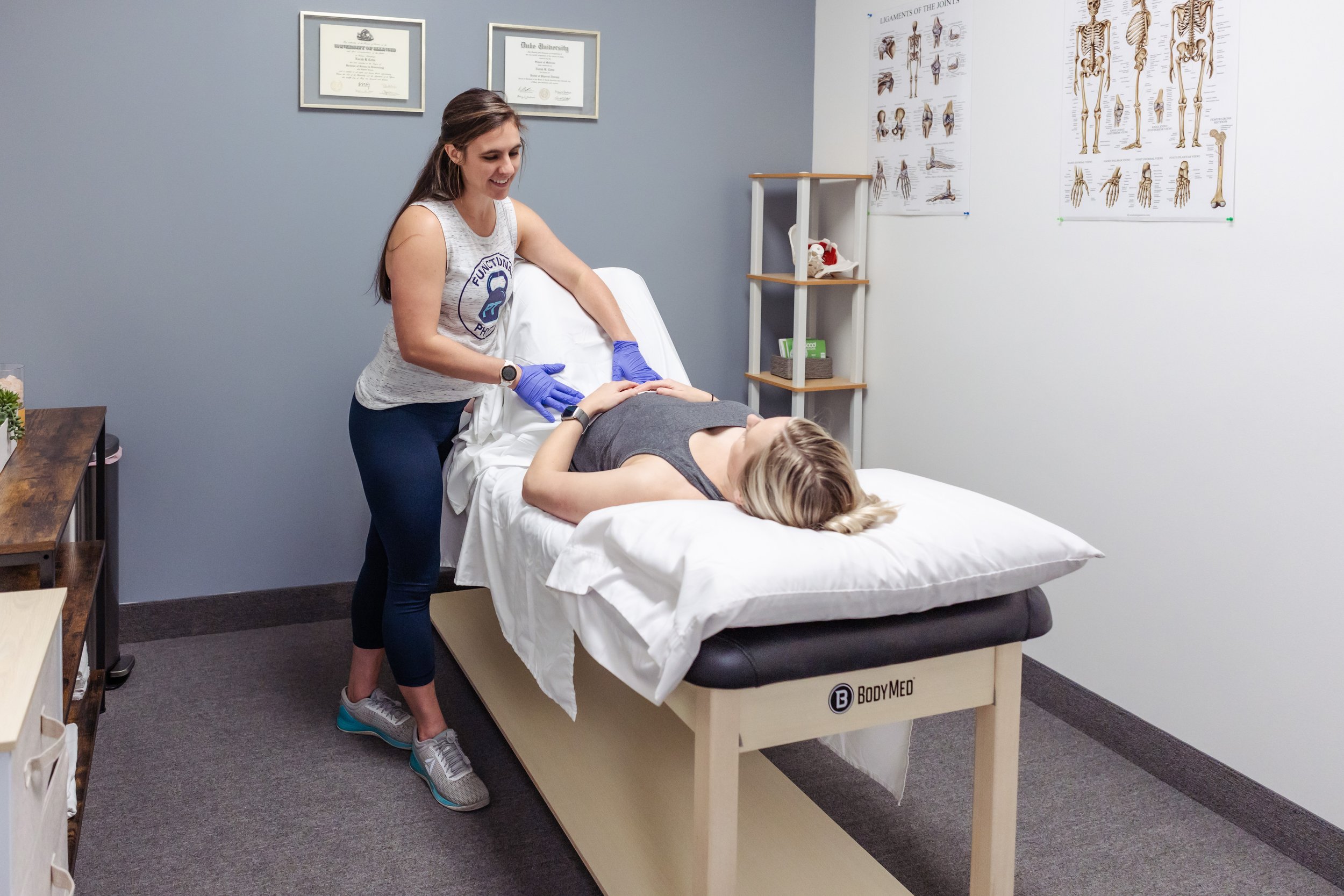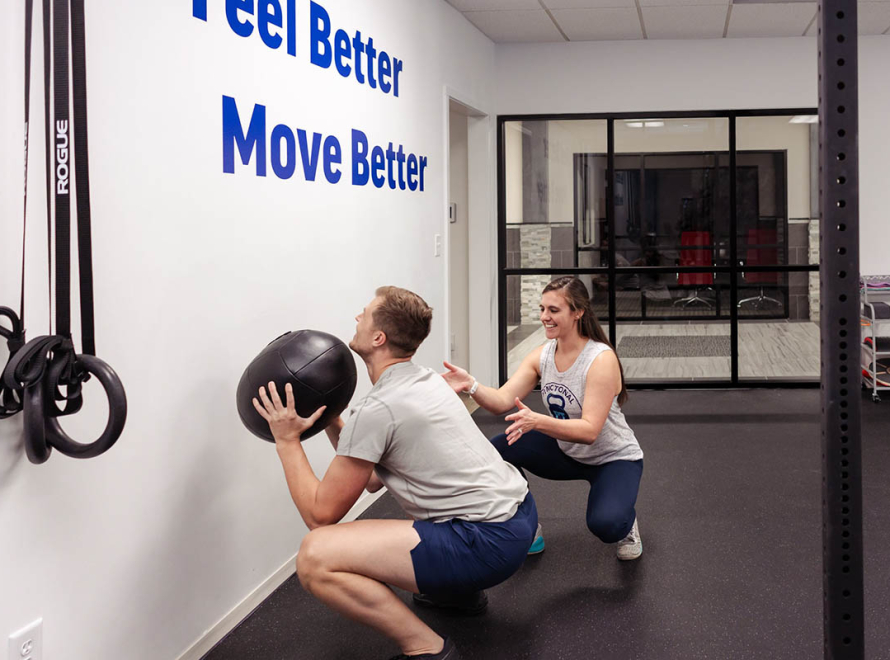
What is pelvic pain?
Pelvic pain is defined as any pain in the lower abdomen, vagina, perineum, rectum, prostate, groin and sacrum or tailbone area. Pelvic pain can develop due to a number of factors such as:
· Nerve irritation
· Referred pain
· Pain from current or previous injury or surgery
· Myofascial trigger points
· Childbirth injury
· Chronic straining
· Muscle guarding
· Stress and anxiety
· Pelvic infection or inflammation
Symptoms include pain with sexual activity, difficulty initiating bowel and bladder movements, pain with sitting, irritation when wearing tight pants or jeans, difficulty sleeping and pain with physical activity.
While it is estimated that 1 in 7 American women suffer from pelvic pain, physical therapy Durham NC has been shown to be effective in the treatment of pelvic pain. Here are three strategies I use when treating patients with pelvic pain
1. Breathing and Relaxation
The pelvic floor muscles coordinate with the diaphragm muscle (the main muscle involved in breathing), such that when we inhale our diaphragm moves down, while the pelvic floor muscles also move down and lengthen. On our exhale the pelvic floor and diaphragm move back up into their starting position.
Working on good diaphragmatic breaths helps to relax and lengthen the pelvic floor muscles, which in many cases of pelvic pain, are very tense.
I love this variation of breathing in a squat position because it really helps to relax and stretch the deep pelvic floor muscles
Breathing also helps to activate our parasympathetic nervous system (i.e. our “rest and digest” system), thus helping to decrease overall stress and anxiety, which has been found to be correlated to pelvic pain.
2. Soft Tissue Work
Soft tissue work just means any type hands on work to decrease muscle tension and trigger points. This includes things like cupping, massage, dry needling and even self-release such as using a foam roller or massage ball.
Many times, muscles in addition to the pelvic floor muscles such as the adductors, glutes, quad, hip flexors and lower back muscles are holding a lot of tension as well. Performing soft tissue work on the pelvic floor muscles in addition to surrounding muscles can help with relief by releasing painful trigger points and overall muscle tension.
Check out this video below to see how to foam roll the adductor muscles
3. Training Functional Movement Patterns
Especially when a patient has goal of being active, training functional movement patterns such as squatting, hinging, pulling and pressing is an important part of treatment. Initially this usually looks like doing very light or unweighted movements coordinated with breathing.
Training these movement patterns helps to develop good movement strategies (such as avoiding breath holding!) and teaches the body to use the correct muscles for these movements. When we move in sub-optimal ways and don’t fully use our big “mover” muscles such as the glutes, and it can put extra stress on our pelvic floor and cause these already irritated muscles become even more aggravated.
It’s also important to note that multidisciplinary approach to the treatment of pelvic pain is of utmost important. This includes but is not limited to physical therapist, OBGYNs, Urologists, chiropractors, acupuncturists and mental health professionals.
If you’re suffering from pelvic pain and want to learn more about how Physical therapy Durham NC can help you, contact us today to get started!




